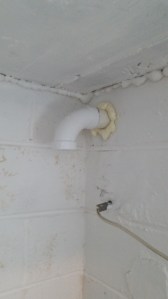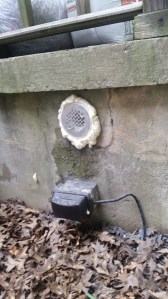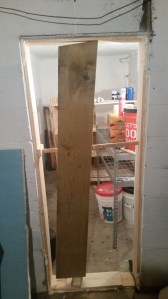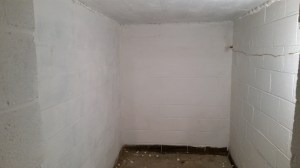It’s finally done! The plants are out, the room is cleaned, the food is in!
As I mentioned in the earlier posts about root cellars, they need to have good ventilation to prevent spoilage and growth of mold/mildew. I accomplished this by breaking two holes into the walls, one outside and one into a secluded portion of the basement. I used pvc piping and a floor drain with window screen to keep any insects from getting inside, then sealed it with spray foam insulation. I did the same thing minus the floor drain (only screen) for the vent into the basement. This will allow a cross breeze, which can also be manipulated for a limited amount of temperature control.

After installing the vents, I also had to make it bug proof, both for food security when i have fresh/raw produce, and so lady tinker will feel safe going down there. I accomplished this by waterproofing the entire room and sealing all the cracks. I also had to install a bug-proof doorway, which I cheaply accomplished using some boards, more spray insulation, and scrap 2″ foam boards from an earlier project. I also packed some foam into the french drain under the door frame to allow water out but keep any insects from getting in.

So it’s Done! Other than some experimentation with automation to play with fans and temperature controls, it’s now a fully functioning root cellar. This will significantly increase our storage capacity and free up space in our pantry in the spare room upstairs (which was honestly a little crowded with shelving).





